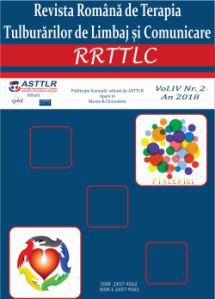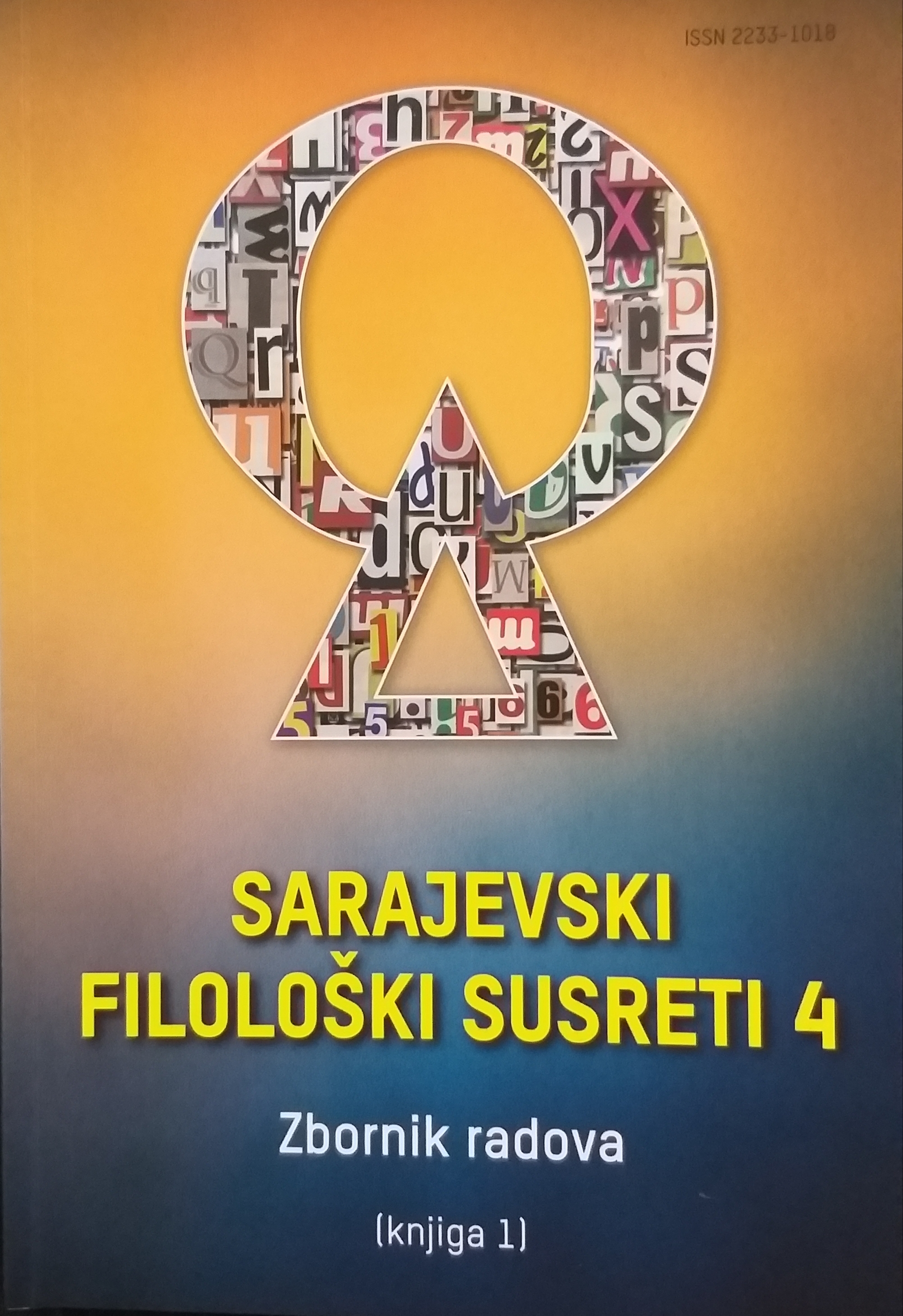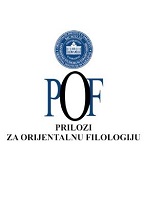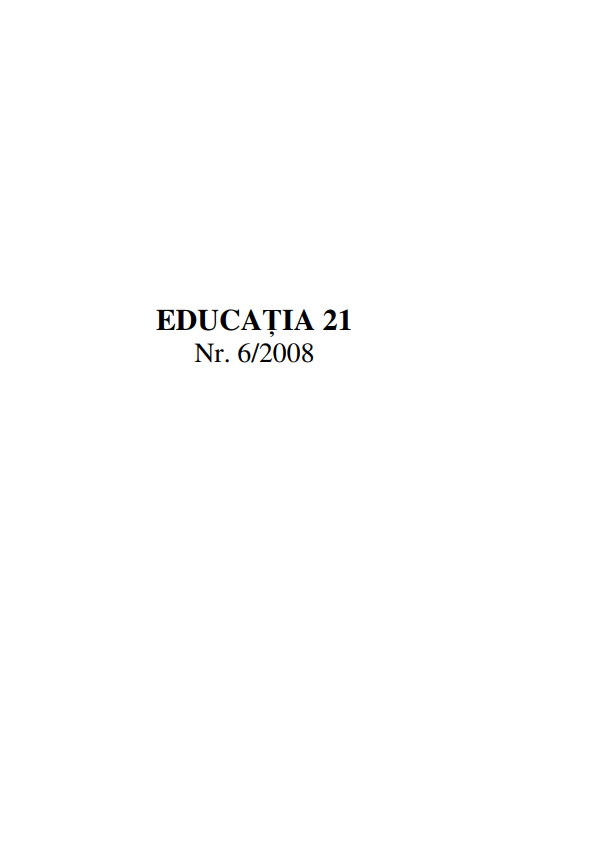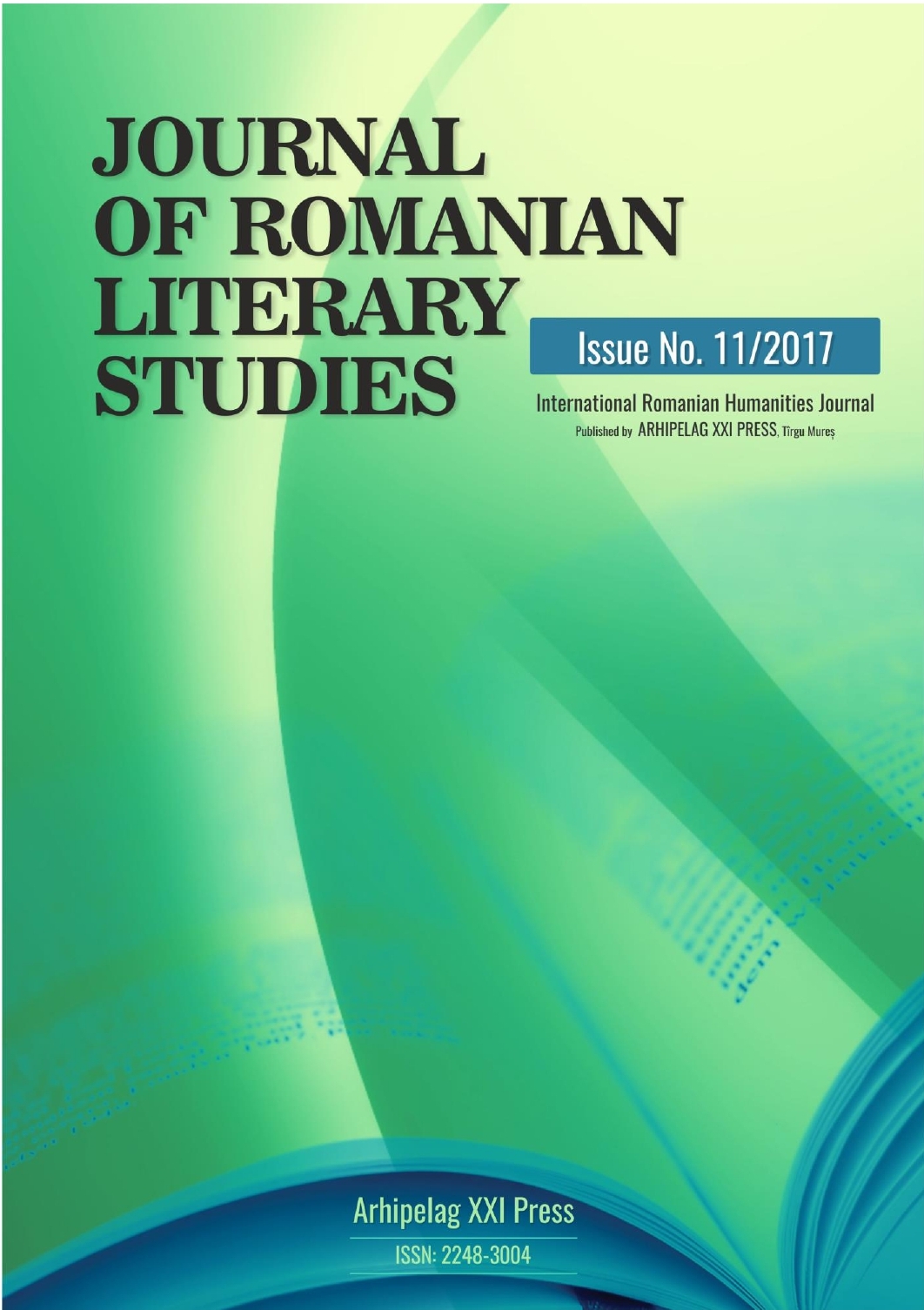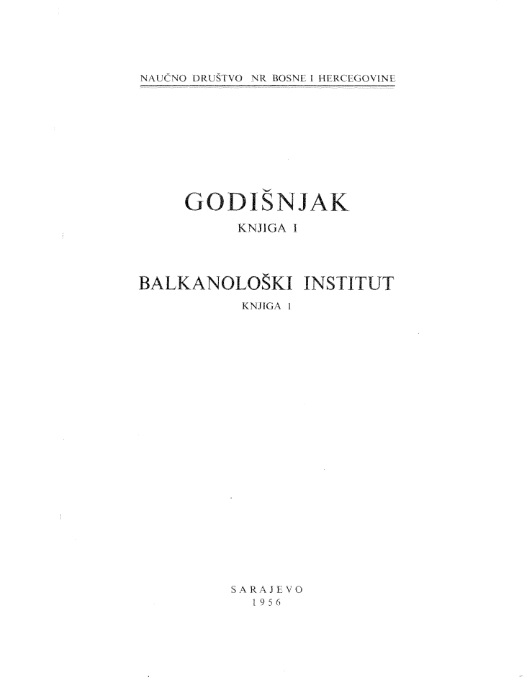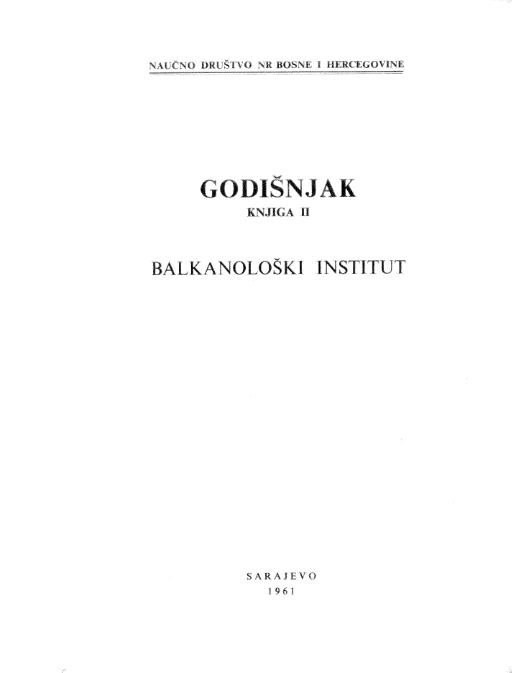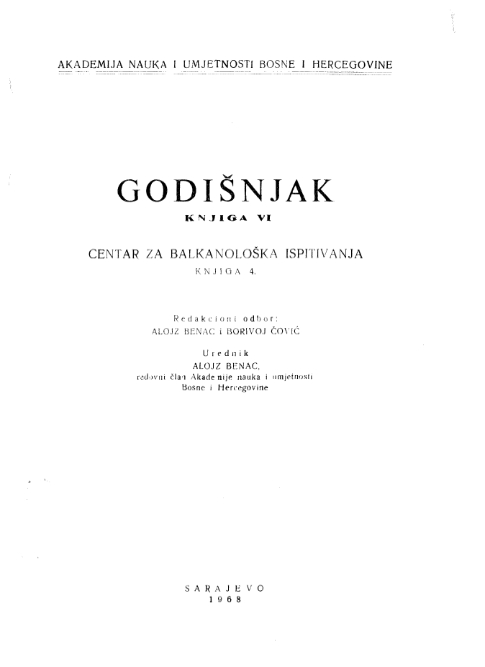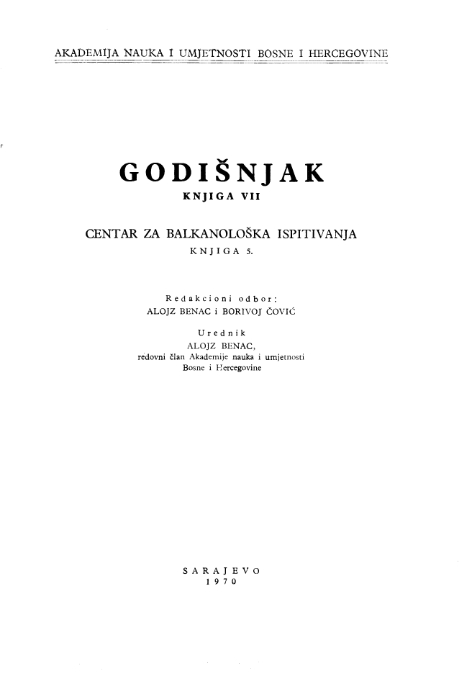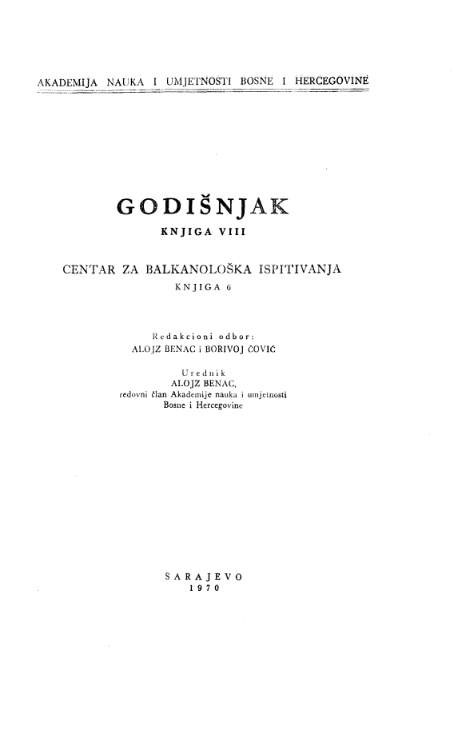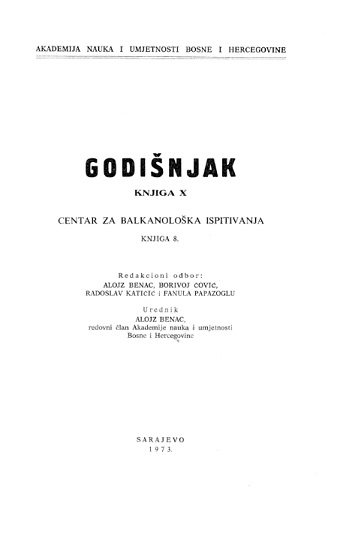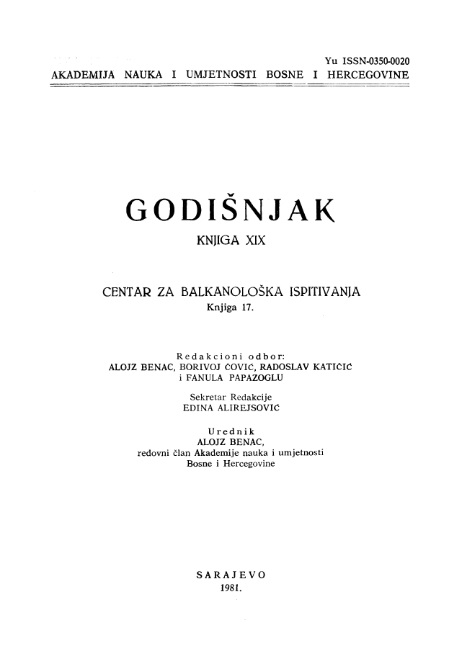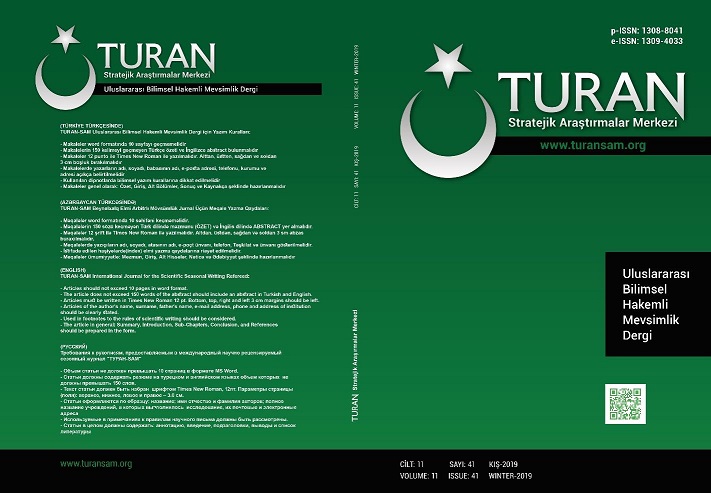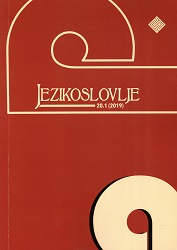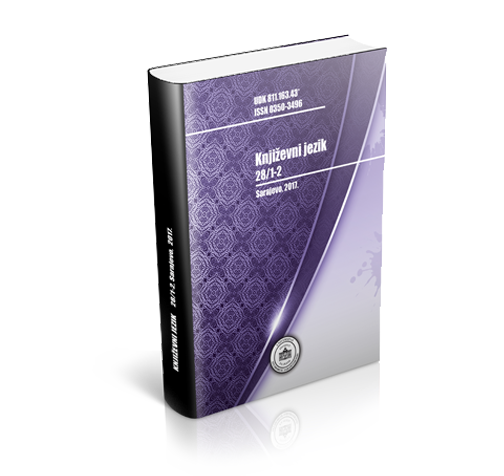Author(s): Bojan Čop / Language(s): French
Issue: 8/1970
Pošto smo obradili leksičke izoglose, treba proveriti i gramatičke izoglose; i te su mnogobrojne i od veoma velikog značaja za preistoriju naših jezika. A. Velik je broj promena u deklinaciji osnova na -o- i -Ó- koje su stvorili zajedno grčki jezik i italska grupa: (1) U genitivu množine osnova na -a- stari je oblik na *-Óm zamenjen novim na *-asóm, koji potice od zamenica: gr. theâôn (hom.), lat. equarum, osk. egmazum; več u mikensko doba -ion je jedini oblik ovog padeža u grčkom jeziku. (2) Nominativ množine osnova na -o- zamenio je stari nastavak *-5s u grčkom i latinskom jeziku — a ne u osko-umbrijskom! — mladim -oi, koji je opet uzet od zamenica: lat. equi < *-oi, gr. hippoi; primetiti treba da taj nastavak nastupa i u drugim evropskim jezicima: ir. ir < *viroi, sl. vtiči, lit. kod prideva (geri, gerie-ji), germ, kod prideva (got. blindai), alb. v end es-i-t, zoq, tohar. B yakwi; nastupanje *-oi, u ovom slučaju, mora biti vrlo staro, još starije nego italo-grčka simbioza; ali osko-umbr. grupa mora da je bila u to doba odvojena od latinsko-grčkog kompleksa. (3) Akuzativ množine osnova na -o- sa nastavkom na -ons uticao je na isti padež osnova na -5, tako da je i taj dobio nastavak *-ans umesto prajezičnog *-Ss: gr. kret. timans, lat. equas < *-ans, osk. viass, umbr. vitlaf. (4) Osnove na -5- imaju u grčkom i latinskom jeziku — ali ne u osko- -umbr.! — nastavak (gr. -ai pod uticajem -oi osnova na -o-) u nominativu množine: lat. equae, gr. timai. (5) Dativ — ablativ množine u ital. grupi je na -ois (lat. equïs < *-ois, osk. nesimois), što polazi od ievr. lok. mn. *-oisu i od ievr. instr. mn. na *-Óis; u grčkom jeziku imamo dat. mn. na -oisi i -ois (hippoisi, hippo is). (6) U dativu množine osnova na -5- grčki jezik je imao nekad dva nastavka: -asi < lok. mn. ievr. *-asu (at. tamiasi) i *-ais > -ais, stvoren pod uticajem osnova na -o-: khorais; slično u italskoj grupi: instrumental množine (prešao i u dativ-ablativ množine) osnova na -á- završava se na -ais < *-5is: lat. equïs < ^equals, osk. deivinais. U dativu-ablativu množine ievr. nastavak *-bhos, *-bhyos potpuno je eliminisan u deklinaciji osnova na -o- i -á- kako u grčkom, tako i u italskom jeziku. Jer je fonetički sistem u grčkom jeziku i italskoj grupi ostao dugo skoro nepromenjen, ne mogu se očekivati mnogobrojne igr. promene. Ipak, neke promene mogu se zapaziti: (20) Zvučne aspirirane okluzive *bh, *dh, *(gh), *gh, *guh prelaze zajedno u grčkom jeziku i italskoj grupi u bezvučne *ph, *th, *kh, *quh; u italskim jezicima te su okluzive prešle u bezvučne spirante f, fr, x» X> iz ko j ih su postali historički glasovi (osko-umbr. f, h, lat. f-b, d, h-g, f-v); prim. *bhérd »nesem« > gr. phérd, ital. *phér5 > jerd itd. (21) Samo ograničeno pojavljuje se izoglosa ievr. r, l > or (gr. i ro), ol (gr. i Io): lat. cord-, eol. kôrzâ, lat. molta, multa, osk, moltam, cipr. plôtei; itd.; u grčkom jeziku ta je promena poznata iz eolskih i arkado- -eiparskih dijalekata, pa i iz mikenskog doba (to-pe-za — (tôrpeza) »trdpeza«).
More...
